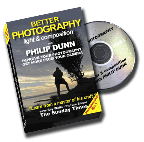It is sometimes possible to mix and match some of the three methods I mentioned in Part 1 with good results. For instance, you might use flash with a slow shutter speed. The duration of the flash is very short indeed and will freeze any action or movement. The slow shutter speed, however (maybe around 1/30sec or less), will cause the shutter to remain open long enough to capture some of the natural light. Any moving subject lit by this light will appear blurred. This creates a sort of double exposure – one for the flash and one for the available light. It is a technique that can prove highly effective and, if done properly, will inject a powerful sense of movement into the picture. This was the first picture I took as darkness fell, the action really began. I upped the ISO to 400 and used flash for this picture. I set the shutter speed to 1/30sec and the aperture to f8. This combination has nicely balanced the flash with what little daylight remains in the sky. Had I used a faster shutter speed – say 1/125sec, the sky would have become almost black and the flash would have dominated. Notice how the reflective sign on the very left of the pictures has bounced the light of the flash back again. Beware of this if street signs are in your picture. This time it can be easily cropped off or cloned out.
This was the first picture I took as darkness fell, the action really began. I upped the ISO to 400 and used flash for this picture. I set the shutter speed to 1/30sec and the aperture to f8. This combination has nicely balanced the flash with what little daylight remains in the sky. Had I used a faster shutter speed – say 1/125sec, the sky would have become almost black and the flash would have dominated. Notice how the reflective sign on the very left of the pictures has bounced the light of the flash back again. Beware of this if street signs are in your picture. This time it can be easily cropped off or cloned out.
A little bit of pre-planning can really pay dividends when covering a street event. You may have to decide between finding one good vantage point (see Part 1) from which you can photograph the entire event, or moving around the scene to shoot pictures of the action.
In the photograph on the right you can see that night has fallen. I have used a very slow shutter speed, 1/8sec with flash set to Rear Sync (sometimes called Rear Curtain). This fires the flash at the END of the exposure and creates trails behind any object in the image that moves while the shutter is open before the flash has fired. This can be an effective way of creating the sense of movement within your picture. Experiment - it's fun.
In Part 3: A little post-production work to create something special
1 Dec 2007
How to photograph night events. Part 2
Subscribe to:
Post Comments (Atom)


No comments:
Post a Comment